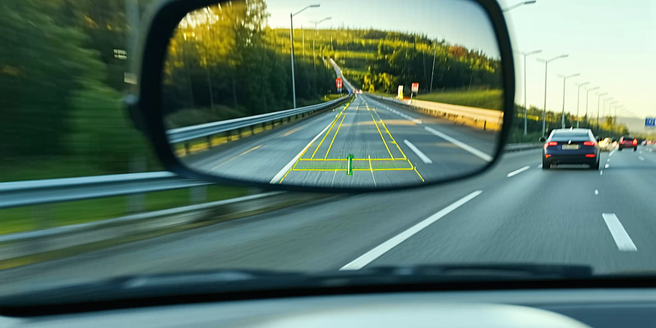
Introduction to Radar Technology
Radar technology has revolutionized the way we approach road safety and vehicle navigation. Comprising Radio Detection and Ranging systems, radar uses electromagnetic waves to detect and locate objects. Initially developed for military applications, its civilian use has expanded significantly, particularly in automotive industries. Modern radar systems provide capabilities that enhance driver assistance systems like adaptive cruise control, blind-spot detection, and automatic emergency braking. These systems are essential for developing autonomous vehicles, contributing to an environment where human error in driving is reduced. Given the non-intrusive nature of radar, they function under various driving conditions, including adverse weather, making them reliable in ensuring road safety. As technology advances, the miniaturization and affordability of radar systems enable wider adoption, unlocking new potentials in the realm of transportation safety.
How Radar Works in Vehicles
Radar systems in vehicles operate by emitting radio waves that bounce off objects and return to the radar system, providing information about the object’s distance, speed, and direction. This data enables vehicles to react to their surroundings in real-time, offering advanced safety features. When integrated into a car’s sensory system, radar assists in maintaining a safe distance from other vehicles through adaptive cruise control. It also helps in avoiding collisions by detecting obstacles that drivers might not be able to see. The ability to work in challenging conditions, such as fog or darkness, makes radar an excellent choice for vehicle safety. Furthermore, the speed at which radar systems can process information is crucial for the development of autonomous vehicles, where fast and accurate decision-making is necessary to enhance safety on the roads.
Radar Systems and Their Benefits in Road Safety
Radar systems bring a plethora of benefits to road safety. By providing real-time data on the presence and movements of vehicles, pedestrians, and other objects, radar enhances situational awareness. This capability is integral to the functioning of advanced driver-assistance systems (ADAS), which aid in accident prevention. For instance, radar is used in collision avoidance systems that alert drivers to potential hazards, sometimes taking automatic action if necessary. The rapid response time of radar systems, combined with their ability to operate in diverse environmental conditions, ensures that they provide reliable safety measures year-round. Furthermore, the integration of radar technology promises to complement the navigation and control systems of autonomous vehicles, thus reducing traffic fatalities and improving the overall safety of the roads for all users.
Challenges and Limitations of Radar in Road Safety
While radar technology offers numerous benefits, it also faces challenges and limitations. One significant challenge is the potential for interference from other radar-equipped vehicles or infrastructure, which can degrade performance. Additionally, radar systems sometimes struggle to precisely identify objects, often perceiving them as indistinct or falsely identifying non-hazardous items as threats. The accuracy of radar can also be impacted by adverse weather conditions such as heavy rain or snow, which can scatter the radio waves. Furthermore, the cost of implementing high-quality radar systems can be prohibitive for some manufacturers, limiting widespread adoption. Another limitation is the requirement for regulatory compliance around frequency bands used for automotive radar. Continuous research and development efforts are needed to address these challenges and improve the effectiveness and reliability of radar systems in enhancing road safety.
Recent Advances in Automotive Radar Technology
Recent years have seen significant advances in automotive radar technology, driven by the push towards more sophisticated autonomous vehicles. Innovations include the development of higher frequency radar systems that provide greater resolution and accuracy, enabling better object detection and classification. These advancements make radar more suitable for urban environments where clutter and noise can be problematic. Another breakthrough is the integration of radar with other sensor technologies like lidar and cameras, facilitating a multi-modal approach that compensates for the individual limitations of each system. Software improvements have also played a role, with advanced signal processing algorithms enhancing radar’s ability to distinguish between relevant and irrelevant objects. These technological strides are making automotive radar systems smarter, more reliable, and more cost-effective, paving the way for their broader application in next-generation vehicles.
The Future of Radar in Enhancing Road Safety
The future of radar in road safety lies in its integration with evolving automotive technologies and smart infrastructure. As autonomous driving becomes more mainstream, radar’s role as a cornerstone technology will expand. Continued advancements in machine learning and artificial intelligence are likely to refine radar systems’ ability to interpret complex driving environments accurately. Future vehicles will likely employ radar not just for obstacle detection but for detailed environmental mapping, essential for fully autonomous navigation. Moreover, developments in vehicle-to-everything (V2X) communication will see radar systems collaborating seamlessly with smart infrastructure to optimize traffic flow and reduce congestion. This cooperation between radar-equipped vehicles and infrastructure can establish a networked safety architecture, ensuring comprehensive road safety improvements. Thus, radar will remain a vital component of the future mobility landscape, delivering a new era of road safety.
